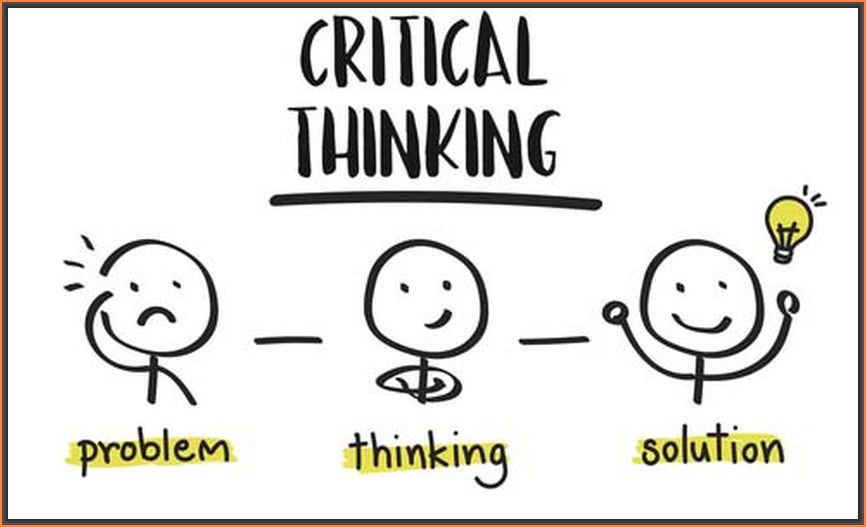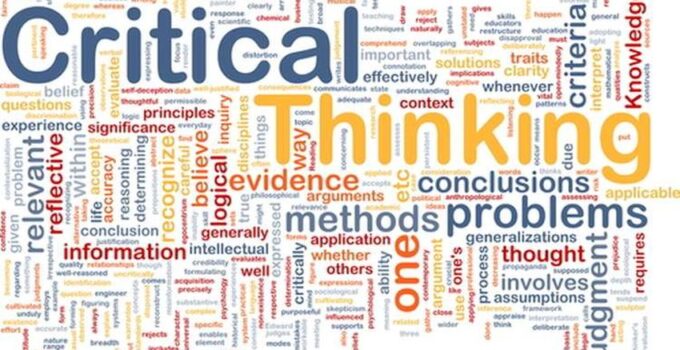It is the ability to do an objective analysis and evaluation of information to make a reasoned judgment. As such, it is extremely important for students and people that usually take decisions at work. Why so? Well, people with good skills can discern between useful and less useful information.
The application of this ability often results in better decisions. Critical thinking can be developed in an individual. Evaluating objectively data, facts, and scientific findings can be taught to someone since early childhood.
This has a very positive impact on writing skills too. It helps to present arguments in a very clear and well-structured manner. Writers that use critical thinking always provide good evidence for their claims. Different text formats (essay, dissertation, etc.) written by critical thinkers have something in common. They always lead to a logical conclusion.
Page Contents
The Characteristics of Critical Thinking

source:stmargarets.luton.sch.uk
It has some recognizable characteristics:
- It is persistent, i.e., a critical thinker is continuously reviewing the evidence that supports a claim.
- Critical thinking is skeptical. Critical thinkers do not accept a fact without questioning its validity.
- Critical thinkers do not allow their personal feelings or passions to have a role in the assessment of information.
- Examining data from different perspectives is necessary for better judgment. Hence, this is essential for critical thinking.
- It demands the verification of the information accuracy and reliability of the sources. The validity of any assumption is always verified.
- A critical thinker also checks the logic of an argument and looks for possible logic flaws.
As a result, a critical thinker always reaches informed conclusions. The use of critical thinking in writing is often referred to as “critical writing.”
The Benefits of Applying Critical Thinking to Writing

source:zety.com
When it is applied to writing, the resulting text is always analytical and not merely descriptive. In the context of student assignments, a critical thinker presents a well-structured argument that refuses to accept unproven facts. The text usually contains a balanced account of arguments for and against an idea. Contrastingly, descriptive writing is a mere description of things that were done or read.
Critical thinkers include the entire set of evidence supporting their claims. They usually recognize the limitations of their ideas. What’s more, the path to conclusions is always paved with good reasons. On the other hand, descriptive writing just presents the things the way they are, without challenging ideas. Descriptive writing is usually chosen by students because of its simplicity.
However, it would be convenient to teach most people to “transform” the information and not just report it. How to teach someone to construct an argument instead of simply retyping one? That is why critical thinking must be taught.
Critical Thinking for Writing Can Be Taught and Developed
To improve writing skills, it can be taught since early childhood. There is at least one book collection titled “Critical Thinking Activities to Improve Writing Skills.” The books are aimed at children within 4-12+ years old of age. The books teach children the basics of critical writing. As a result, children will write more concise, accurate, and detailed accounts of events. This will be useful to write homework and assignments that are more analytical. This will translate into better grades.

source:locusassignments.com
You can start building a foundation for critical thinking in toddlers and very young children. While no single strategy exists to foster it in small children, you can apply the following tips borrowed from reliable essay writing company CustomWritings with ENL academic writers:
- Provide much opportunity to play. It is through playing that children start developing the foundations for later abstract critical thinking. They try something and see the result. Then, they try something slightly different and see whether a different result is created.
- Ask open-ended questions. When your child asks a question, instead of providing a straight answer, you can ask an open-ended question. For example, you could reply “What do you think is happening?” Then, encourage his or her further thinking independently of the given answers. “Your idea is interesting. Can you elaborate?”
- Encourage thinking in alternative ways. Do not let your children get fixated with a single idea or solution to a problem. Encourage other ideas and options by asking, for example, “What are the other possible solutions?”
Sometimes you will need to step in to help your children solve a problem. In such cases, explain the process of critical thinking you use to reach a solution or conclusion. Your children will learn from observing the way you think.
Critical Thinking Activities for Academic Writing

source:4writers.net
College or university students can learn to think and write more critically and creatively by reading. However, students should not read without a clear goal in mind. Students should read to understand the way an author builds his or her arguments and how they present evidence. A good exercise to attain this goal is asking questions aimed at obtaining a more in-depth analysis of the text. “How did the author organized the content? How are the different ideas connected? How does the author add new ideas to an argument?”
This exercise will help to understand the critical thinking used by others. Students will recognize those abilities in themselves and will start using them in their writing. Next time you read a text, analyze it by asking similar questions.





